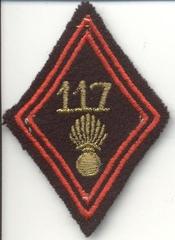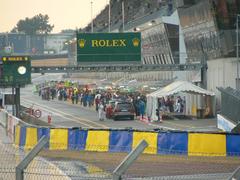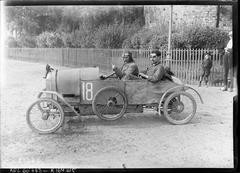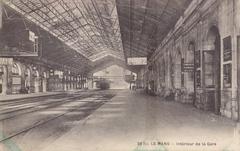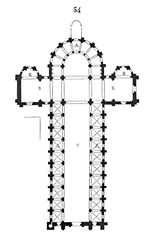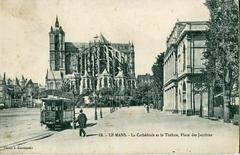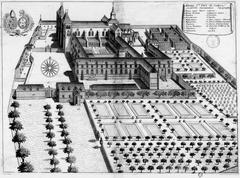
Notre-Dame de la Couture Le Mans: Visiting Hours, Tickets, and Travel Guide
Date: 03/07/2025
Introduction: History and Significance
Notre-Dame de la Couture, situated in the heart of Le Mans, France, is a remarkable monument reflecting centuries of religious devotion, architectural evolution, and cultural significance. Founded between 587 and 605 by Saint Bertrand as a Benedictine abbey, it has witnessed pivotal moments from early monasticism and medieval expansion to Renaissance artistry and modern restoration. Its layered history is visible in Romanesque walls, Gothic vaults, and Renaissance details, making it essential for anyone interested in medieval architecture, French ecclesiastical history, and spiritual heritage.
Originally established outside the ancient Gallo-Roman city walls, its journey from monastic estate to active parish church mirrors the shifting religious, political, and social landscape of the Maine region. The church combines Romanesque solidity with Gothic innovation and Renaissance flair, inviting visitors to explore its rich architectural tapestry. Today, generous opening hours, free entry, and seasonal guided tours make it accessible to a wide public, while its partial accessibility ensures a broad audience can appreciate its heritage. Notre-Dame de la Couture is not only a monument to the past but also a vibrant center of worship, culture, and community in Le Mans (abbaye-couture.com, Le Mans Tourisme, France-Voyage).
Contents
- Early Foundations and Monastic Origins
- Turbulence and Refoundation (9th–11th Centuries)
- Medieval Expansion and Architectural Flourishing
- The Hundred Years’ War and Renaissance Changes
- Early Modern Decline and Maurist Reform
- Revolution and Parish Church Status
- 19th and 20th Century Transformations
- Architectural Highlights
- Visitor Information: Hours, Tickets, Accessibility
- Nearby Attractions
- Special Events and Cultural Activities
- Frequently Asked Questions (FAQ)
- Visual Gallery and Interactive Map
- Plan Your Visit
Early Foundations and Monastic Origins
Notre-Dame de la Couture originated as the Abbey of Saint Peter and Saint Paul, founded between 587 and 605 by Saint Bertrand (Bertichramnus), Bishop of Le Mans. The abbey was strategically placed just outside the ancient city walls, offering both seclusion and accessibility. Initially dedicated to Saints Peter and Paul, it quickly acquired significant landholdings through royal and noble patronage, extending its influence beyond the Maine region and even into England (abbaye-couture.com).
Turbulence and Refoundation (9th–11th Centuries)
The abbey faced decline during the Carolingian era, suffering from Norman invasions and weakened central authority, which led to the near disappearance of its monastic community. Revival came in 990 under Hugues I, Count of Maine, and Abbot Gauzbert, launching a golden age of spiritual and economic renewal. The name “Couture” evolved from the Latin “cultura,” reflecting both the cultivated land and the worship of God (abbaye-couture.com).
Medieval Expansion and Architectural Flourishing
In the 11th and 12th centuries, the abbey reached its zenith, overseeing numerous parishes and priories. Construction of the present church began between 1070 and 1100, marked by a long Romanesque nave, side aisles, a transept, choir, and radiating chapels. Significant Gothic modifications in the 12th and 13th centuries included the removal of side aisles, buttressing, and a new choir. The 13th-century western porch with its twin towers (now asymmetrical) stands as a landmark of medieval architecture (abbaye-couture.com).
The Hundred Years’ War and Renaissance Changes
Despite regional turmoil during the Hundred Years’ War, the abbey retained power and wealth. The radiating chapels were rebuilt in Gothic style, and the transept was remodeled in 1518, further enriching the church’s architectural diversity (abbaye-couture.com).
Early Modern Decline and Maurist Reform
The 16th-century introduction of commendatory abbots led to decline in monastic discipline. However, joining the Congregation of Saint-Maur in the 17th century revitalized the abbey, restoring discipline and leading to renovations of the conventual buildings—a legacy still visible today (abbaye-couture.com).
Revolution and Parish Church Status
The French Revolution ended monastic life in 1791, and the abbey’s properties were nationalized. The church became a parish church in 1801, taking on an active role in the local community (abbaye-couture.com).
19th and 20th Century Transformations
During the 19th century, the abbey buildings were repurposed for civic use, and the church underwent restoration. In 1915, a fire destroyed the north tower, leaving the west façade asymmetrical—a distinctive feature today (abbaye-couture.com).
Architectural Highlights
Notre-Dame de la Couture showcases a blend of Romanesque and Gothic styles. The nave’s impressive width and Angevine vaults, the sculpted porch with its Last Judgment tympanum, and a crypt constructed from reused Gallo-Roman materials all reveal its layered history. The church features a classic Latin cross plan, richly carved capitals, and fine stained glass windows depicting saints and biblical narratives. The Renaissance “Virgin and Child” by Germain Pilon and the 14th-century fresco “Les Anges Musiciens” are artistic highlights (Le Mans Tourisme, France-Voyage).
Visitor Information: Visiting Hours, Tickets, and Accessibility
-
Opening Hours:
- Monday to Saturday: 09:00 – 19:30
- Sunday: 09:00 – 17:00
Hours may vary on holidays and during special events. Check the official parish website or Le Mans Tourism for updates.
-
Tickets:
Entry is free; guided tours and special exhibitions may have a fee. -
Accessibility:
The main entrance is at street level. Some areas, such as the crypt, have steps and uneven flooring. Contact the church in advance for assistance (Sarthe Tourisme). -
Guided Tours:
Self-guided access to the treasure room is available on Fridays (14:30–17:30) and Saturdays (10:00–12:30) in summer. Guided tours in French are offered during festivals; group and multilingual visits can be arranged by contacting the church. -
Location:
Place Aristide Briand, 72000 Le Mans, France.
15 minutes’ walk from the train station; accessible by public transport and car. Parking available nearby.
(Le Mans Tourism directions)
Nearby Attractions
- Le Mans Cathedral (Saint-Julien Cathedral)
- Cité Plantagenêt (Old Town)
- Tessé Museum and Jean-Claude Boulard Museum
- 24 Hours of Le Mans Museum
A visit to Notre-Dame de la Couture pairs well with these highlights for a deeper immersion in Le Mans’ history (France-Voyage).
Special Events and Cultural Activities
The church hosts daily Masses, weddings, and concerts. It participates in city events such as Nuit des Chimères, with its façade illuminated by artistic projections. For event schedules, consult the parish calendar or Le Mans Tourism.
Frequently Asked Questions (FAQ)
Q: Are tickets required to visit Notre-Dame de la Couture?
A: No, entry is free. Certain tours or exhibitions may require a ticket.
Q: What are the opening hours?
A: Monday to Saturday 09:00–19:30, Sunday 09:00–17:00; check for updates during holidays and events.
Q: Is the site accessible for people with reduced mobility?
A: The entrance is accessible, but some areas (like the crypt) have steps. Contact the church for assistance.
Q: Are guided tours available?
A: Yes, especially during festivals and by prior arrangement.
Q: Can I take photographs inside?
A: Yes, non-flash photography is permitted.
Visual Gallery and Interactive Map
Visual content to include:
- “Notre-Dame de la Couture façade, Le Mans historical site”
- “Interior view of Notre-Dame de la Couture, Le Mans”
- “Map showing location of Notre-Dame de la Couture in Le Mans”
Interactive maps and galleries are available on the Le Mans Tourism website.
Plan Your Visit and Stay Connected
For real-time updates on opening hours, guided tours, and special events, download the Audiala app. Explore related articles on Le Mans historical sites for broader context. Follow us on social media for news, travel tips, and exclusive content.
Summary and Travel Tips
Notre-Dame de la Couture embodies the rich tapestry of French religious and architectural history. Its free admission, partial accessibility, and guided tours make it welcoming to a broad audience. Located within Le Mans’ medieval quarter and near other major sites, it is a must-see for history, art, and culture lovers. Plan your visit by checking hours, booking tours, and using resources like the Audiala app for the best experience (abbaye-couture.com, Le Mans Tourisme, France-Voyage).
Sources and Further Information
- abbaye-couture.com
- Le Mans Tourisme
- France-Voyage
- ndcouture.org
- Pop Culture Monument Historique listing

